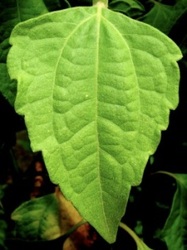FNQROC Natural Asset Management - September 2012
To understand the true nature of such an announcement it is important to understand the funding arrangement which enabled the program to achieve what it did in its lifetime. National cost shared partners (in this instance from NSW 2%, NT 14%, WA 6%) have co-invested annually with Queensland (28%) and Commonwealth Government (50%) for the program to work with stakeholders in this region to eradicate (make it extinct) the weed before it spreads to other states. The funded amount has fluctuated widely from the beginning of the program from $167,000 per annum (94/95) to $1.267 million (09/10). The total investment to date equates to about $7.0 m over 17 years. On top of this investment considerable resource from Local Government, Defence and other Queensland Government agencies has averaged around $400,000 pa. To put the investment to date into perspective it needs to be highlighted that one of the fundamental failings of the program approach has been a lack of adequate resource (for more than 10 years of its duration) to deliver the outcomes required of an eradication program. The crunch time decision which has been made is ultimately one of significantly increasing the resource or to pull the pin.
The decision to cease the program does not mean the investment has not had significant benefit to the region. An independent report on the economic impact and subsequent cost/benefit of the program in 2008 determined the benefit to agriculture from the eradication program to that date was $2.9 billion for agiculture alone, and the combined benefits to agriculture and the environment was $4.5 billion. Additional to this economic perspective is the progress of tactical and strategic weed management practice and training which the program has delivered from aerial survey methodology and weed hygiene, to reporting and data management.
In a nutshell, Local Governments, community and industry are now faced with coming to grips with losing the program's significant benefit for the region at a time when our own capacity to fill the void is itself at a significant low point. With current trends in resourcing and downsizing we can clearly expect that the Queensland State Government is very unlikely to step up to the plate on this matter.
Where to from here is the million dollar question (quite literally) and we will lobby hard to ensure Local Government, the communities we represent, and our regional partners are consulted thoroughly in determining the next steps. Our pest management units are going to have to make some hard decisions in terms of what they can realistically maintain after many years of significant progress. The primary concern in the short term is this national initiative will follow the recent trend of adopting the new jargon of 'phasing', 'transitioning' and 'community management' which is ulitimately just devolution by another name.
The only remaining national cost-shared weed eradication program in the country, the National Four Tropical Weeds Eradication Program based out of South Johnstone will continue.

|

|

|
Siam weed is an agricultural and environmental weed that has been the subject of a national cost shared eradication program for over 15 years. The recent decision cease the program has left regional stakeholders wondering where-to from here?
FNQ Pest Advisory Forum
Mossman turned on the crowd for the August Pest Advisory Forum, pictured below. With 95 attendees it is our best turn out yet. Hats off to Melissa Collins and the crew from Cairns Regional Council, along with Michael Graham and David Green from QDAFF, for a great agenda.

A reminder for those who have not done so to have a look around www.fnqpaf.com.au or subscribe http://www.fnqpaf.com.au/members.html to receive forum meeting invites and the latest alerts and news. The next meeting of the forum will be hosted by Tablelands Regional Council on the southern Tablelands in November.
